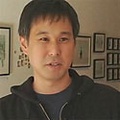On a visit to Japan nearly two decades ago, I learned that the folks I met were interested in Americans—not Asian or Japanese Americans, but actually it was in their perception of Americans, the “white” ones. My younger cousins who were in the single digit age, expected their American relative to look like Zach from Saved by the Bell. I witnessed them say that I was supposed to have blond hair and blue eyes. Then my friends in Tokyo introduced me to their friends who commented, “he’s just like us.” I thought, “cool, but who else could I or should I be?”
In the earlier ‘90s, after their economic bubble burst, Japan still had Levi’s fever. The U.S. was exoticized and still rare. “Yankee,” an Americanized style party girl was supposed to be “cool.” Shops with American names popped up. As an Asian American in Japan, I was treated as lesser than a Japanese person. I looked the looked, but couldn’t speak the language. If I were white, I’d get a pass into the forefront, but instead, I was a like a mute dog.
My friend Shinya once told me, “maybe Giant Robot will help change how Japanese people see Asian Americans.” He said this in 1996 and I remember that statement to this day. (I can now argue if things have changed or not with or without Giant Robot’s help.)
I watch little television. Subtitled J Dramas? Almost never. However, my mother began watching a show called 99 Nen no Ai (99 Years of Love) – Japanese Americans. What kind of title is that? I’ve passed, since the show was based on U.S. history and also spoken in Japanese though the characters are born in America. It’s the reverse of movies like Schindler’s List, where English is somehow the International language spoken on every continent. As the first ten minutes elapsed with my mom calling me over every few minutes and me ignoring her for ESPN, I started to watch it so I could mock it like the smart ass I am.
My father who was incarcerated and therefore a “felon” as I jokingly call him, sat and watched it for the first time as well. It was the “concentration camp” episode—something that he experienced and perhaps why he decided to watch it. He speaks little about the camp experience, perhaps because he was young at the time, but also because it’s just a crappy thing to think about even 70 years later. He’s also that typical Japanese American Nisei man. A Japanese American will understand what I mean.
As the frames rolled through, he’d make comments like, “Busses? Manzanar had buses? We rode in Army trucks!” Then another, “Manzanar had green bushes?” He laughed and said, “we had just desert, nothing could grow.” He explained that the bachelors were put in one area and families in another. The program’s dialogue mentioned that work done by the inmates earned them $12-16 a month. “$16 a month? Maybe in 1850!”
I asked the smart ass question that’s never addressed. Were there any births in camp? Meaning was sex being had? It was many folks per single room, people were crammed, so, how did that happen? He had no clear response since he was 8, 9, and 10 years old at the time, but he did say, “you could see your neighbors through the gaps.”
We talked a little more about specific subjects of Camp. The windstorms in the desert were rough and portrayed via smoke machine in the drama. The production even showed a close up of the wind going through the gaps in the wood barracks. A detail my father was pointing out the just before it made it on screen.
Then some silence as the drama unfolded. “No and No, those were called ‘No No Boys’ who got rounded up and put in Tule Lake,” my father said, when the characters had to deal with the loyalty questions which asked internees if they’d renounce their loyalty to Japan and would join the U.S. armed forces. The characters were torn between their two lands. One, a country that took away their rights and put them in prison, and a country where they weren’t even born. Different view points were presented and backed up and the next episode is set to depict military scenes and more war time drama.
I may or may not watch the show next week, but for an hour, my father got into a subject that has little reason to be brought up casually. It looked like he enjoyed the program that’s loaded with well known Japanese stars. The show is a five-part drama (11 here) that aired on TBS Japan in late 2010 with high ratings. It may be the first time that Japanese Americans were portrayed with as much detail on television to the Japanese public.
J Dramas have created a wave of cool for certain subjects. Perceptions of Okinawans and Koreans have changed drastically through TV. It’s true that a Japanese American didn’t invent Levi’s, Smith and Wesson, or Harley Davidson, but Japanese Americans were a misunderstood group during World War 2 and survived without much revolt against their captors, even after having all of their belongings taken away. “Cool” might not be the right word that gets attached to Japanese Americans after a drama like this, but living through hell with grace is something both Japanese Americans and Japan have endured among lies and injustice. We’ve heard about the returning of 78 million dollars found in the tsunami wreckage and no reports of riots or looting. The similarities continue. I hope the Japanese folks who watched the drama understand that.
Here’s a link to the show site. It shows in 11 parts in the US.
*This article was originally published at GiantRobot.com on August 23, 2011
© 2011 Eric Nakamura





